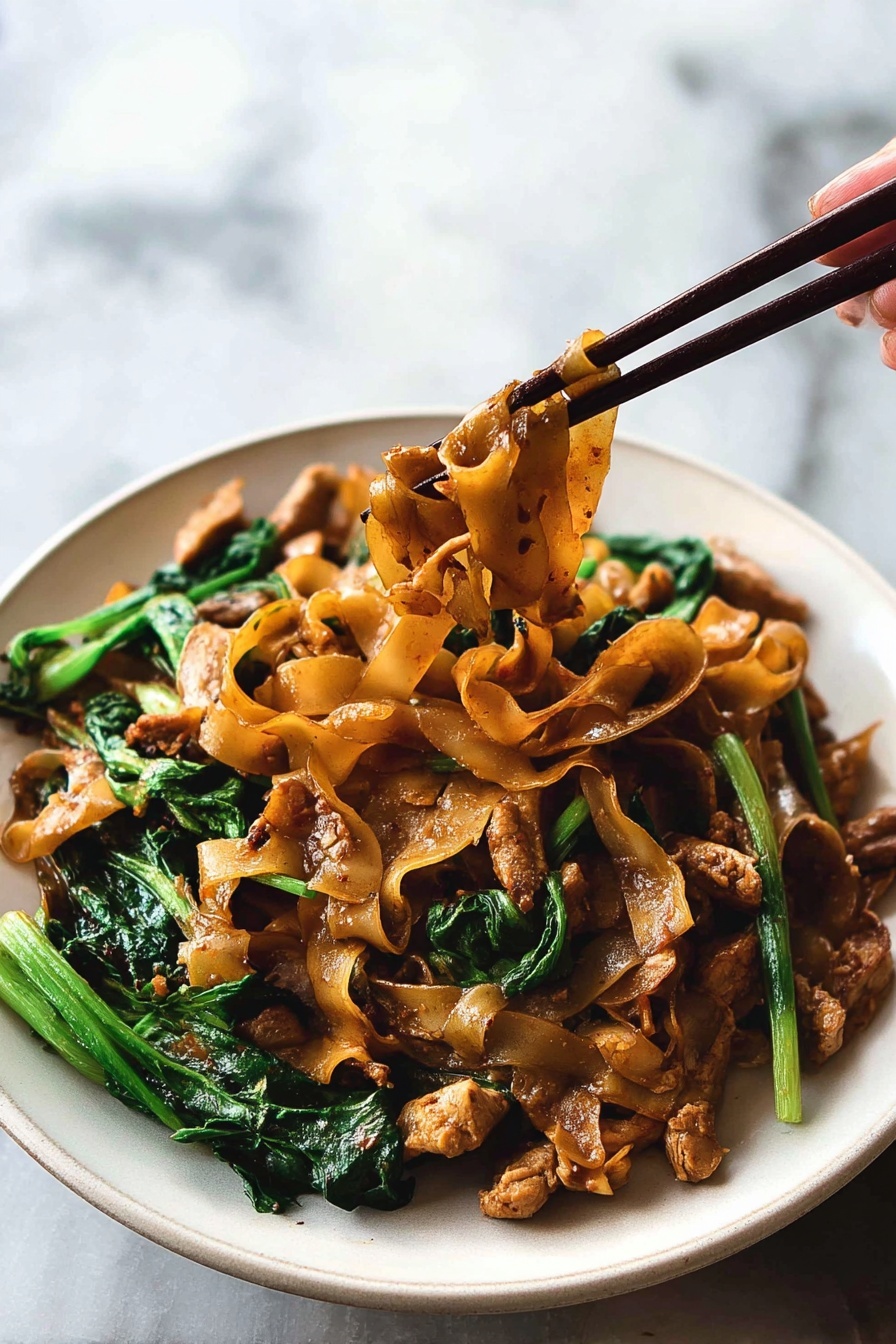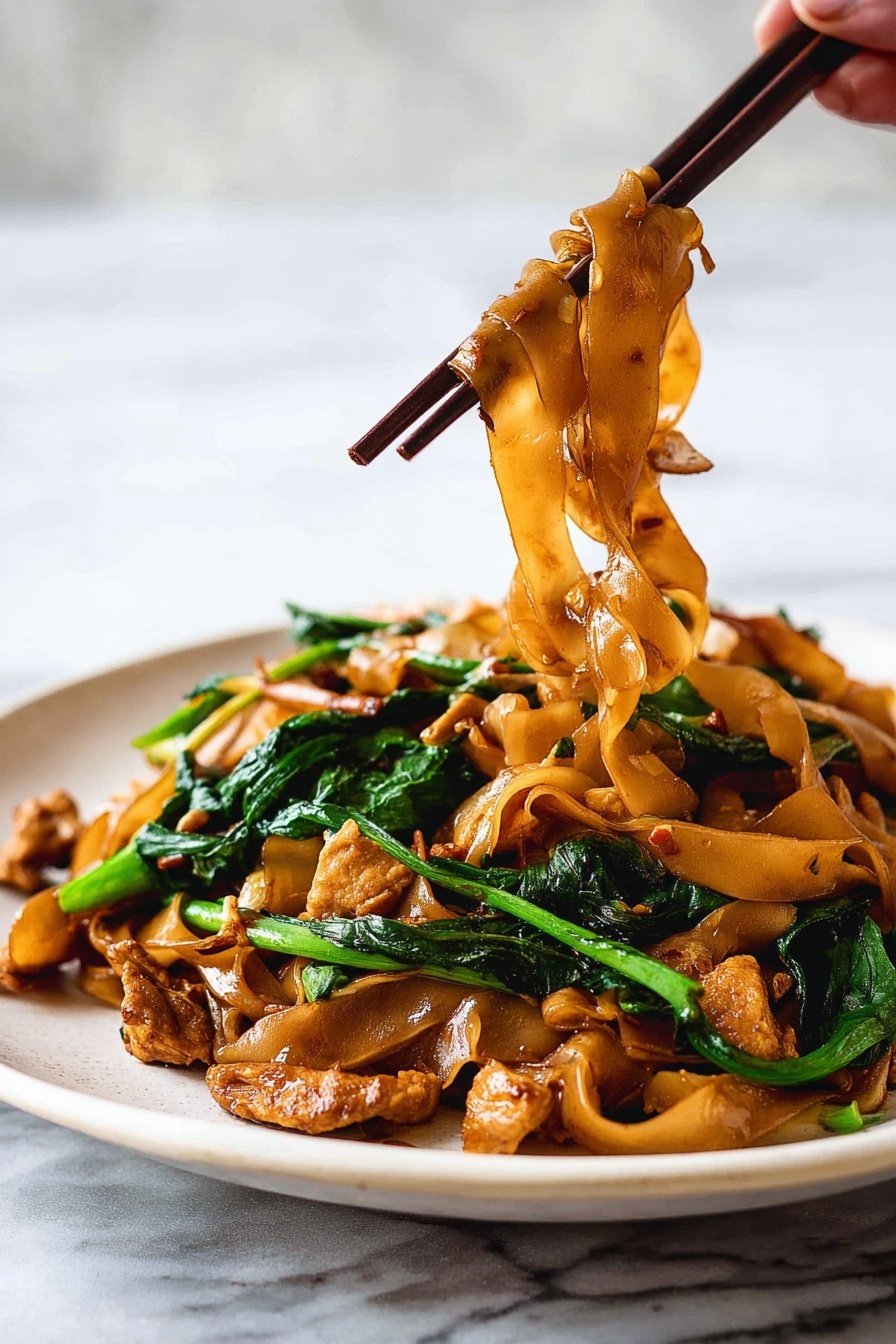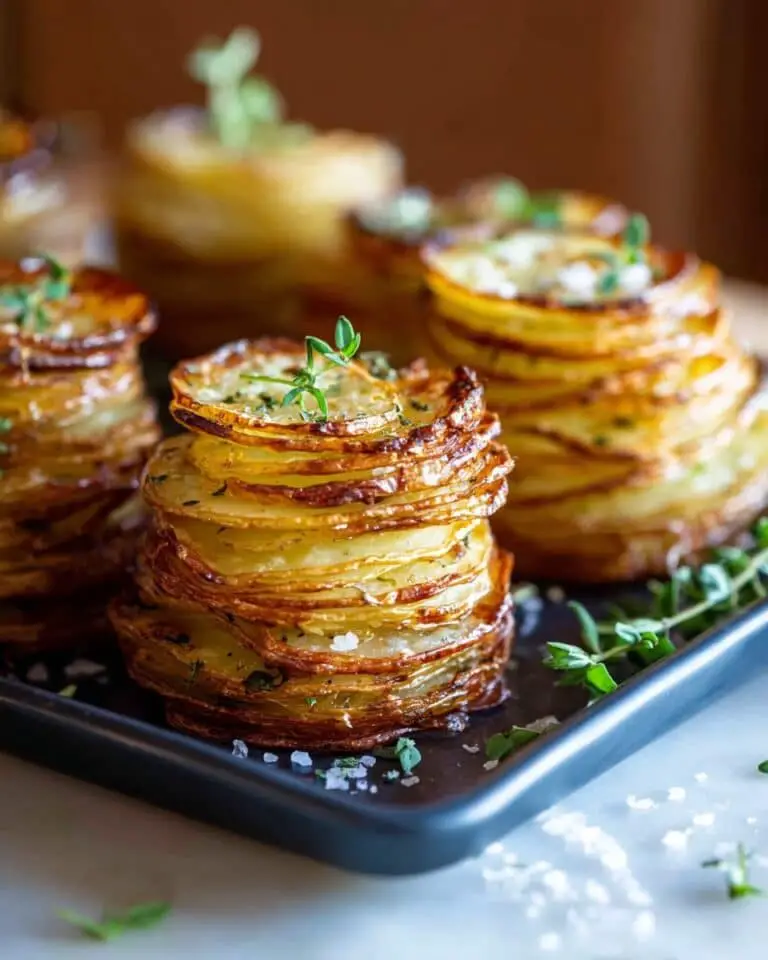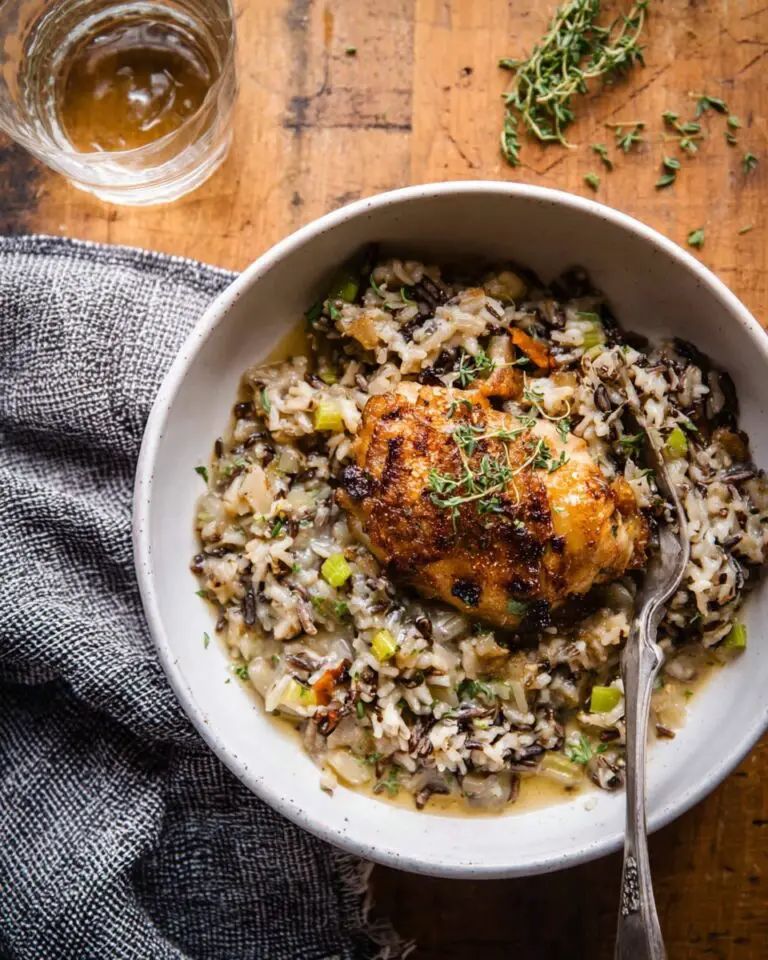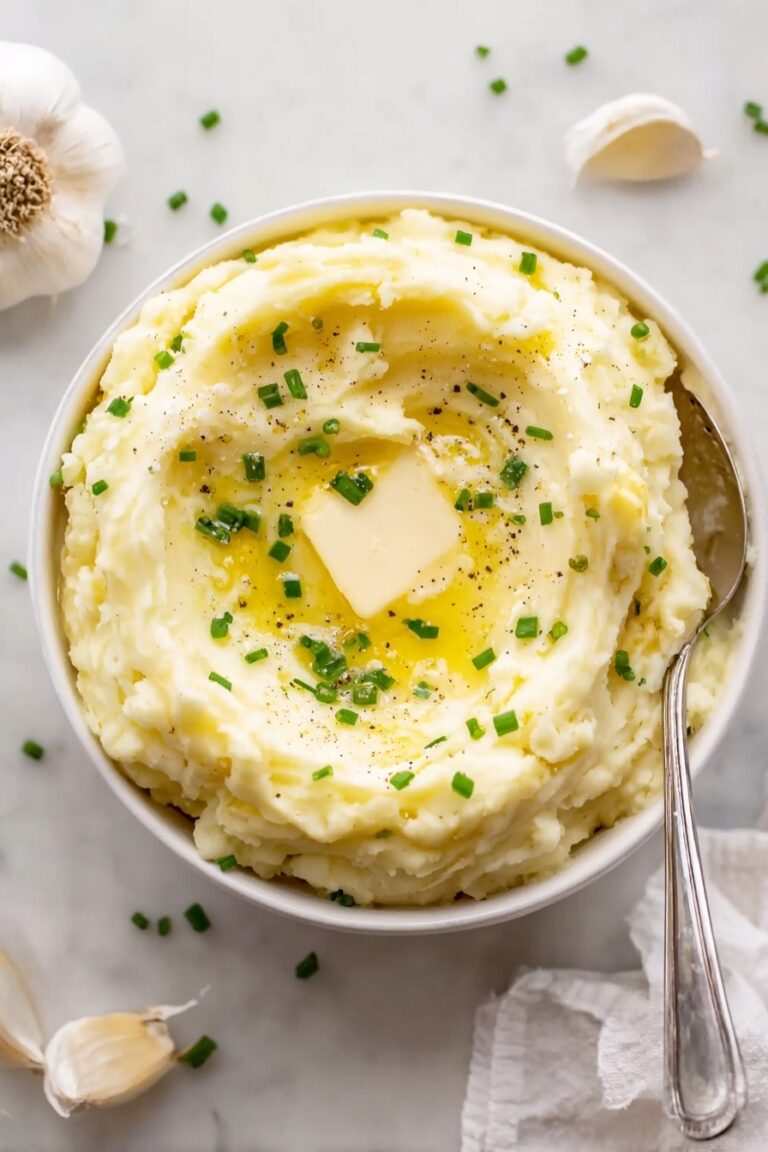If you’re craving something packed with flavor, a little smoky, and just downright satisfying, you’ve come to the right place. I want to share with you my Pad See Ew Thai Noodles with Chicken Recipe — it’s one of my absolute favorites to whip up when I want something quick but restaurant-quality at home. This dish is comfort food that truly delivers a punch with those wide rice noodles caramelized in a luscious sauce that hugs every bite of tender chicken and crisp Chinese broccoli. Stick around because I’ve got all the insider tips and tricks to make sure your version is nothing short of fan-freaking-tastic!
Why You’ll Love This Recipe
- Authentic Flavors: The balance of dark soy and oyster sauce creates that classic savory-sweet taste you expect in Pad See Ew.
- Simple Ingredients: Easy-to-find staples come together quickly, making this perfect for weeknight dinners or last-minute cravings.
- Texture Harmony: Tender chicken, chewy noodles, and crunchy Chinese broccoli make every bite a delight.
- Quick & Satisfying: Ready in under 20 minutes—even I use this recipe when life gets busy but dinner can’t wait!
Ingredients You’ll Need
Each ingredient in this Pad See Ew Thai Noodles with Chicken Recipe plays its part perfectly — the noodles soak up the sauce beautifully while the veggies add that fresh crunch. Don’t fret if you can’t find everything; I’ll share how to swap a few key items without losing authenticity.
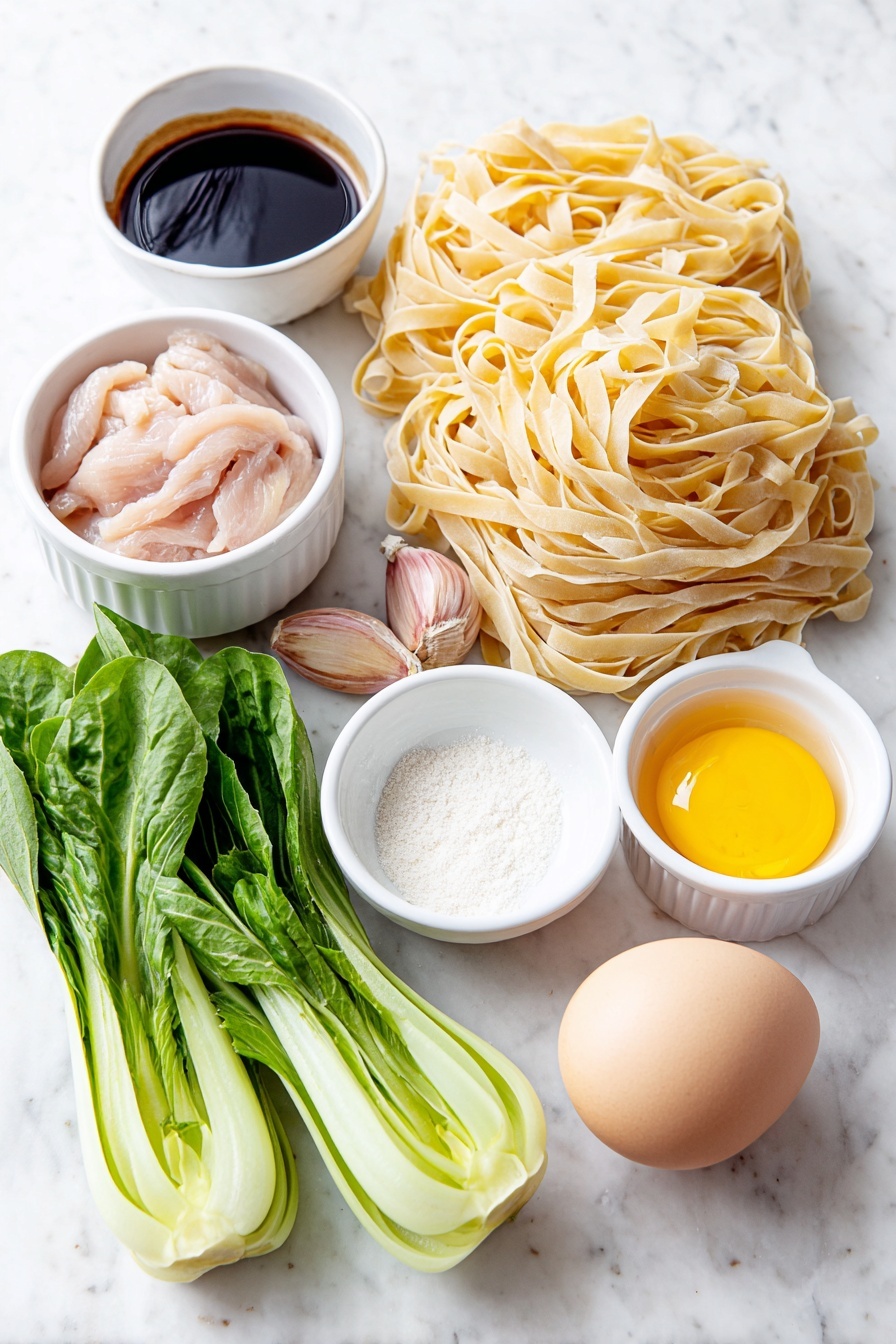
- Dried wide rice stick noodles: I usually grab the widest Pad Thai noodles I can find at the grocery store—they work beautifully as a stand-in for fresh Sen Yai noodles, which can be tricky to source.
- Dark soy sauce: This gives the noodles their signature deep color and robust flavor. If you don’t have it, you can use regular soy sauce, but the dish won’t be as richly colored.
- Oyster sauce: Adds a lovely umami punch and a bit of thickness to the sauce—don’t skip this, it’s key for that authentic taste.
- Light soy sauce: Balances the dark soy and oyster sauce; avoid replacing it with more dark soy to keep flavors balanced.
- White vinegar: Adds a subtle tang to brighten the rich sauce—it’s a small but important addition.
- Sugar: Any kind works fine; it helps create that caramelized sweetness on the noodles.
- Peanut or vegetable oil: Choose a neutral oil with a high smoke point for stir frying—the key to getting that slightly charred flavor.
- Garlic cloves: Finely chopped to release maximum aroma and flavor into the dish.
- Chicken thighs (boneless, skinless): I prefer thighs because they stay juicy and tender under high heat stir-frying.
- Large egg: Gives a lovely silkiness and richness when scrambled through the noodles.
- Chinese broccoli (Gai Lan): The stems provide crunch; the leaves add a fresh, slightly bitter note—if you can’t find it, pak choy or broccolini are great substitutes.
Variations
One of the things I love about this Pad See Ew Thai Noodles with Chicken Recipe is how easy it is to make your own with what you have on hand. Feel free to get creative or tweak for your dietary needs.
- Protein swaps: I’ve tried this recipe with tofu and prawns—both soak up the sauce fabulously and keep it feeling fresh when you want a change from chicken.
- Veggie alternatives: When I can’t find Chinese broccoli, I use bok choy or broccolini, cutting the stems thinly so they cook evenly.
- Spice it up: If you like heat, add fresh chili slices or drizzle some chili oil at the end—my family goes crazy for this little twist!
- Gluten-free: Just make sure to grab gluten-free soy sauce to keep the dish safe without compromising flavor.
How to Make Pad See Ew Thai Noodles with Chicken Recipe
Step 1: Prep Everything Like a Pro
Before you fire up your wok or pan, get your mise en place down. Trim your Chinese broccoli stems and separate the leaves—cut the stems thin so they cook quickly and don’t stay hard. Cook your rice noodles just until tender per package directions, drain them well, and time it so they’re ready right before you start stir-frying. Trust me, leaving cooked noodles sitting around just makes them mushy and more likely to break apart later.
Step 2: Stir Fry Chicken and Veggies
Heat a tablespoon of oil in a heavy-based skillet or wok until it’s really hot but not smoking. Toss in the finely chopped garlic and stir for about 15 seconds until fragrant. Then in goes the sliced chicken thighs—cook them through until mostly opaque. Add the Chinese broccoli stems next and stir-fry until the chicken is nearly cooked through. Finally, toss in those flavorful leaves and cook just until wilted; this layering keeps textures perfect.
Step 3: Add in the Egg
Push your chicken and veggies to the side of the wok, crack the egg into the empty space, and scramble it lightly. This step adds richness and binds the flavors. Once cooked, remove everything to a plate and give your wok a quick scrape to get rid of any burnt bits.
Step 4: Caramelize the Noodles for Ultimate Flavor
Now, this is THE trick for great Pad See Ew. Return your wok to the stove and crank up the heat again. Add the remaining two tablespoons of oil and wait until it starts smoking lightly—that intense heat is what creates that gorgeous slightly charred taste. Add the noodles and your pre-mixed sauce, and then toss as few times as possible—about 1 to 1.5 minutes—just enough for the noodles to soak in sauce and get those delicious caramelized edges. Resist stirring constantly; less is more here.
Step 5: Bring It All Together
Quickly toss the chicken and veggies back into the wok, fold everything together gently, and serve immediately. The dish is best enjoyed hot, when the noodles are glossy and perfectly coated.
Pro Tips for Making Pad See Ew Thai Noodles with Chicken Recipe
- Hot Wok is Key: Always make sure your wok or pan is smoking hot before adding noodles to get that characteristic caramelization.
- Timing Noodles Right: Cook noodles just before stir-frying to avoid mushiness—it’s a game changer I learned after struggling with soggy noodles for ages.
- Minimal Tossing: Toss noodles gently and sparingly during caramelization; over-stirring prevents that lovely sear and texture.
- Use Thigh Meat: Chicken thighs stay tender and juicy even under high-heat stir frying; breast meat can dry out faster.
How to Serve Pad See Ew Thai Noodles with Chicken Recipe

Garnishes
For garnishes, I usually keep it simple: a wedge of lime to squeeze over adds a fresh zing that brightens the whole dish. A sprinkle of crushed roasted peanuts adds a lovely crunch and nuttiness if you’re feeling extra indulgent. Sometimes I toss on a handful of fresh cilantro for color and a fragrant note, but that’s totally optional depending on your tastes.
Side Dishes
I like pairing Pad See Ew with light Asian-style salads like a tangy green papaya salad or a simple cucumber salad with chili and lime. Steamed dumplings or a miso soup also make lovely companions if you want a fuller meal. These sides help balance the richness of the noodles without overwhelming your palate.
Creative Ways to Present
For dinner parties, I’ve served Pad See Ew family-style in a big shallow bowl, surrounded by small dishes of chili flakes, pickled chilies, and lime wedges so guests can customize their bites. Another fun idea is to plate individual portions in banana leaves for an authentic Thai vibe—plus, it makes cleanup easier!
Make Ahead and Storage
Storing Leftovers
I keep leftover Pad See Ew in an airtight container in the fridge and try to eat it within 2 days. The noodles hold up pretty well, but the texture can soften a bit. If your noodles are getting mushy, a quick stir-fry in a hot pan with a splash of oil helps revive them nicely.
Freezing
Freezing works, but I don’t usually recommend it for this dish since the noodles tend to lose texture and can get mushy when thawed. If you want to freeze, pack portions tightly, then thaw and reheat gently to minimize sogginess.
Reheating
The best way to reheat is in a hot skillet or wok with a little oil over medium-high heat to bring back that caramelized flavor and avoid the microwave’s softening effect. Stir constantly until heated through but avoid cooking so long that the noodles dry out.
FAQs
-
Can I use fresh rice noodles instead of dried?
Absolutely! Fresh Sen Yai rice noodles are the traditional choice and have a lovely chewy texture. Just be sure to prep them correctly by softening them gently and avoid overhandling, since they’re delicate and can break easily during stir-frying.
-
What can I substitute for Chinese broccoli?
If Chinese broccoli isn’t available, bok choy, pak choy, or broccolini are excellent alternatives. Just slice the stems thin to match the cooking time of the original vegetable for the best texture and flavor harmony.
-
Why is my Pad See Ew not turning out dark and caramelized?
This usually happens if the wok or pan isn’t hot enough or if you stir the noodles too much during cooking. Make sure your pan is smoking hot before adding noodles and sauce, then toss gently just enough for the sauce to coat the noodles and caramelize but not so much that they lose that signature sear.
-
Can I make this vegetarian?
Yes! Simply swap chicken for firm tofu or extra vegetables. Use vegetarian oyster sauce or mushroom sauce (available in Asian markets) to keep that umami richness without the seafood base.
Final Thoughts
Making this Pad See Ew Thai Noodles with Chicken Recipe at home has become a little ritual for me on busy days when I want something filling but also a bit special. I absolutely love how the noodles soak up the deep, caramelized sauce and how every bite feels balanced between tender, crisp, sweet, and savory. Once you try it, I bet you’ll want to add it to your own regular rotation, just like my family has. So give it a go—you’ll enjoy every smoky, saucy bite just as much as I do!
Print
Pad See Ew Thai Noodles with Chicken Recipe
- Prep Time: 8 minutes
- Cook Time: 10 minutes
- Total Time: 18 minutes
- Yield: 2 servings
- Category: Main Course
- Method: Stir-frying
- Cuisine: Thai
Description
Pad See Ew is a popular Thai stir-fried noodle dish made with wide rice noodles, chicken, Chinese broccoli, and a savoury-sweet sauce combining dark soy, oyster, and light soy sauces. This recipe offers a perfect balance of smoky, caramelised noodles and tender vegetables in a quick and easy skillet cooking method.
Ingredients
Noodles
- 200g / 7 oz dried wide rice stick noodles, or 450g / 15 oz fresh wide flat rice noodles (Sen Yai)
Sauce
- 2 tsp dark soy sauce
- 1 1/2 tbsp oyster sauce
- 1 tbsp light soy sauce (or all purpose)
- 2 tsp white vinegar (plain white vinegar)
- 2 tsp sugar (any type)
Stir Fry
- 3 tbsp peanut or vegetable oil, separated
- 2 cloves garlic, very finely chopped
- 150g / 5 oz boneless, skinless chicken thighs, sliced
- 1 large egg
- 4 stems Chinese broccoli (Gai Lan)
Instructions
- Preparation: Trim the ends of the Chinese broccoli and cut into 7.5cm (3″) pieces. Separate the leaves from the stems and slice thick stems in half vertically to about 0.8cm (0.3″) thickness. Prepare noodles according to packet instructions and drain, timing them to be freshly cooked just before use. Mix all sauce ingredients until sugar dissolves.
- Heat oil: Heat 1 tablespoon of oil in a very large heavy-based skillet or wok over high heat until hot.
- Cook garlic and chicken: Add finely chopped garlic and cook for 15 seconds. Add sliced chicken and stir-fry until it mostly turns from pink to white.
- Cook Chinese broccoli stems: Add the broccoli stems to the wok and continue cooking until the chicken is nearly cooked through.
- Add Chinese broccoli leaves: Stir in the broccoli leaves and cook just until wilted.
- Scramble egg: Push all ingredients in the wok to one side, crack the egg into the empty side, and scramble it until just set.
- Remove chicken and vegetables: Transfer everything from the wok to a plate and scrape the wok clean.
- Caramelise noodles: Return wok to high heat and add 2 tablespoons of oil. Heat until smoking hot. Add the noodles and sauce then toss minimally over 1 to 1 1/2 minutes to let the edges caramelise and absorb the sauce.
- Combine and serve: Quickly add the chicken and vegetable mixture back into the wok and toss to mix everything well. Serve immediately for best flavor and texture.
Notes
- Use fresh Sen Yai wide rice noodles if available for authenticity, but dried wide rice stick noodles (like Pad Thai noodles) are easier to handle and widely accessible.
- Dark soy sauce adds a deeper, richer color and flavor; if you substitute with regular soy sauce, the noodles won’t be as dark or intense.
- Do not replace light soy sauce with more dark soy sauce as it overpowers the dish.
- Chicken thighs can be substituted with tofu, prawns, or other stir-fry friendly proteins.
- If Chinese broccoli is unavailable, pak choy, bok choy, or broccolini (halved lengthwise) can be used as alternatives.
- To maintain noodle texture, do not pre-cook noodles too early or leave them sitting after cooking to avoid breakage.
Nutrition
- Serving Size: 1 serving
- Calories: 450 kcal
- Sugar: 6 g
- Sodium: 800 mg
- Fat: 18 g
- Saturated Fat: 3.5 g
- Unsaturated Fat: 12 g
- Trans Fat: 0 g
- Carbohydrates: 50 g
- Fiber: 3 g
- Protein: 25 g
- Cholesterol: 125 mg

